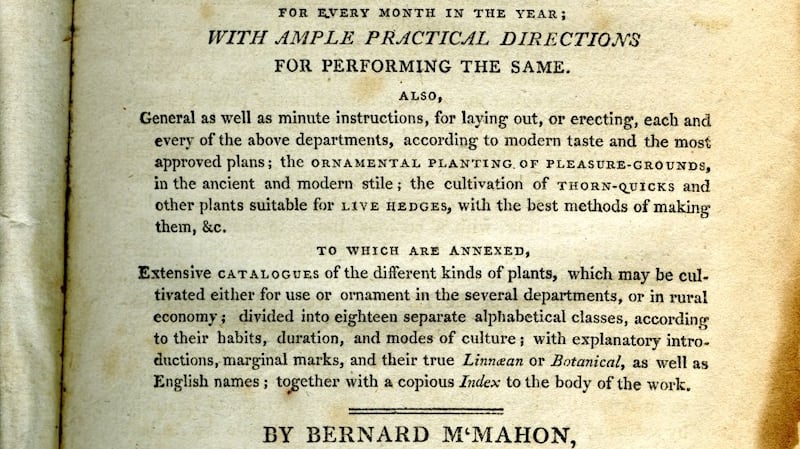It looks like a very posh holly. Garden designers love it for the structural statement it makes in a border; the rest of us enjoy the clumps of yellow flowers that blaze right through the winter, when the rest of the garden has packed up and gone to sleep.
Everyone knows it as mahonia. But very few people seem to know that this ultra-fashionable plant was named after an Irish man.
Bernard McMahon emigrated to Philadelphia in 1796, at around the age of 21. By 1802 he had set up a nursery business, and almost immediately brought out a seed catalogue – the first to be published in the US – which included 720 species.

Like many immigrants McMahon was, at first, concerned with how to make an American garden look exactly like one from the old country.
Gradually, however, he developed a keen interest in local plants and, in 1806, produced The American Gardener's Calendar. Breaking with English traditions, it urged American gardeners to comb the local fields and woodlands for "the various beautiful ornaments with which nature has so profusely decorated them".
Native wildflowers, McMahon insisted, were particularly suited for the hot, humid summers of eastern north America. “Is it because they are indigenous that we should reject them?” he pleaded.
Botanically-minded folks
By this time McMahon was operating out of a 20-acre property on the Germantown Road in Penn township. His shop, or “seed house”, became a gathering place where all sorts of botanically-minded folks would meet to exchange information about the latest vegetable and flower varieties.
It is brought vividly to life in an 1857 article, which describes the shop’s “bulk window, ornamented with tulip-glasses, a large pumpkin, and a basket or two of bulbous roots”.
Behind the counter was Mrs McMahon, “with some considerable Irish accent, but a most amiable and excellent disposition”. McMahon himself was also to be found, “putting up seeds . . . writing his book, or attending to his correspondence”.
“In one corner was a shelf containing a few botanical or gardening books; another contained the few garden implements, such as knives and trimming scissors; a barrel of peas, and a bag of seedling potatoes, an onion receptacle, a few chairs . . . ”
Thomas Jefferson
McMahon's passion for native plants brought him to the attention of one American gardener in particular. Thomas Jefferson, author of the American Declaration of Independence and third president of the US, is said to have regarded McMahon's Calendar as his horticultural "Bible".
Jefferson, who developed extensive gardens at his family plantation Monticello, in Charlottesville, Virginia, exchanged a stream of letters with McMahon and would follow his instructions step by step when planting tulips in his flowerbeds or sea kale in his vegetable plots.
McMahon supplied plants for the 20 oval flowerbeds, designed by Jefferson himself, which still surround the house.
McMahon died in 1816. Two years later his name was given to the group of evergreen shrubs which are now popular, not just in American gardens, but back in the “old world” as well.











